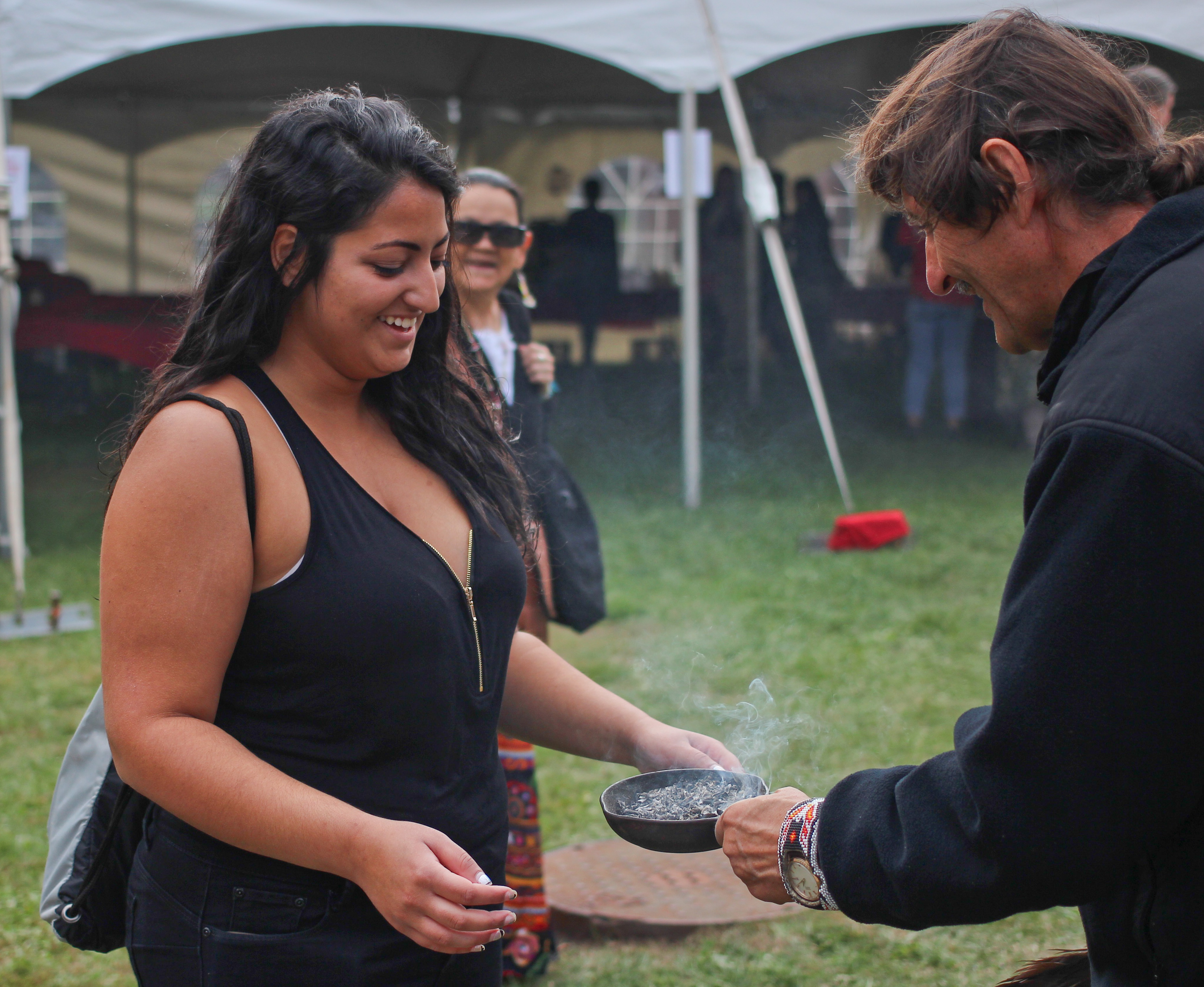Walking With Our Sisters aims to serve as a form of closure to many of the Indigenous families who have lost loved ones. The memorial is in honour of two spirit-people and Indigenous women in Canada and the United States who have gone missing or have been murdered.
The opening ceremony was held at the Carleton University Art Gallery on Sept. 25.
Upon stepping into the gallery, the scent of natural herbs like sage and sweet grass burning could be inhaled. The bottom floor of the gallery was full, as family members were given first priority to participate.
Over 1,181 native women and girls have been reported missing or been murdered in the past 30 years according to the organization’s website. Walking With Our Sisters responds to this striking number in a variety of ways.
Inside, the organizers sat on chairs in a semicircle, dressed in traditional clothing for the ceremony, the vast majority of them women. Moccasin tops, also called vamps, are one of the most prominent symbols of Walking With Our Sisters, and were arranged neatly all over the floor surrounding the organizers.
According to Juliana Snowboy, an elder involved in the project, they used vamps instead of complete moccasins to honour the unfinished lives of the missing and murdered. They were arranged in a symbolic way as though the women and children were standing together in lines.
Volunteers handed out paper cups of water and berries in a bowl to all who attended. A group of drummers and singers performed a song on behalf of the Indigenous men who attended the ceremony.
Afterwards, the women took turns sharing their stories, and a microphone was passed around. As each woman took her turn to speak, their quivering voices expressed the pain and sorrow of their past, as well as their gratitude in the present towards the organizers of the event.
As each woman spoke about their experiences, another would perform an emotional and spiritual cleansing of negative energy called smudging. This was done by using a feather to direct the ash of burning sage and sweet grass towards them and using it to gently smudge it on them. Smudging often is used as a preparation for work or ceremony amongst those who practice it.
“It’s a place where you come to receive that healing,” said Snowboy, “and we come together as a family, as healers, as grandmothers just as a unity, and [to] be that one voice to say that this is happening.”
Snowboy said their hope is for the murders to stop, and for the memorial to be smaller in the future.
Tobacco ties and tissues wet with tears were then collected as an offering to be burnt in a sacred fire in honour of those who have gone missing and have been murdered. A few songs were performed towards the end of the ceremony, but this time they were sung together, as one voice.
A feast was later served under a tent outside St. Patrick’s Building for mourners to share as they were encouraged to spend time in celebration with each other to lift their spirits.






